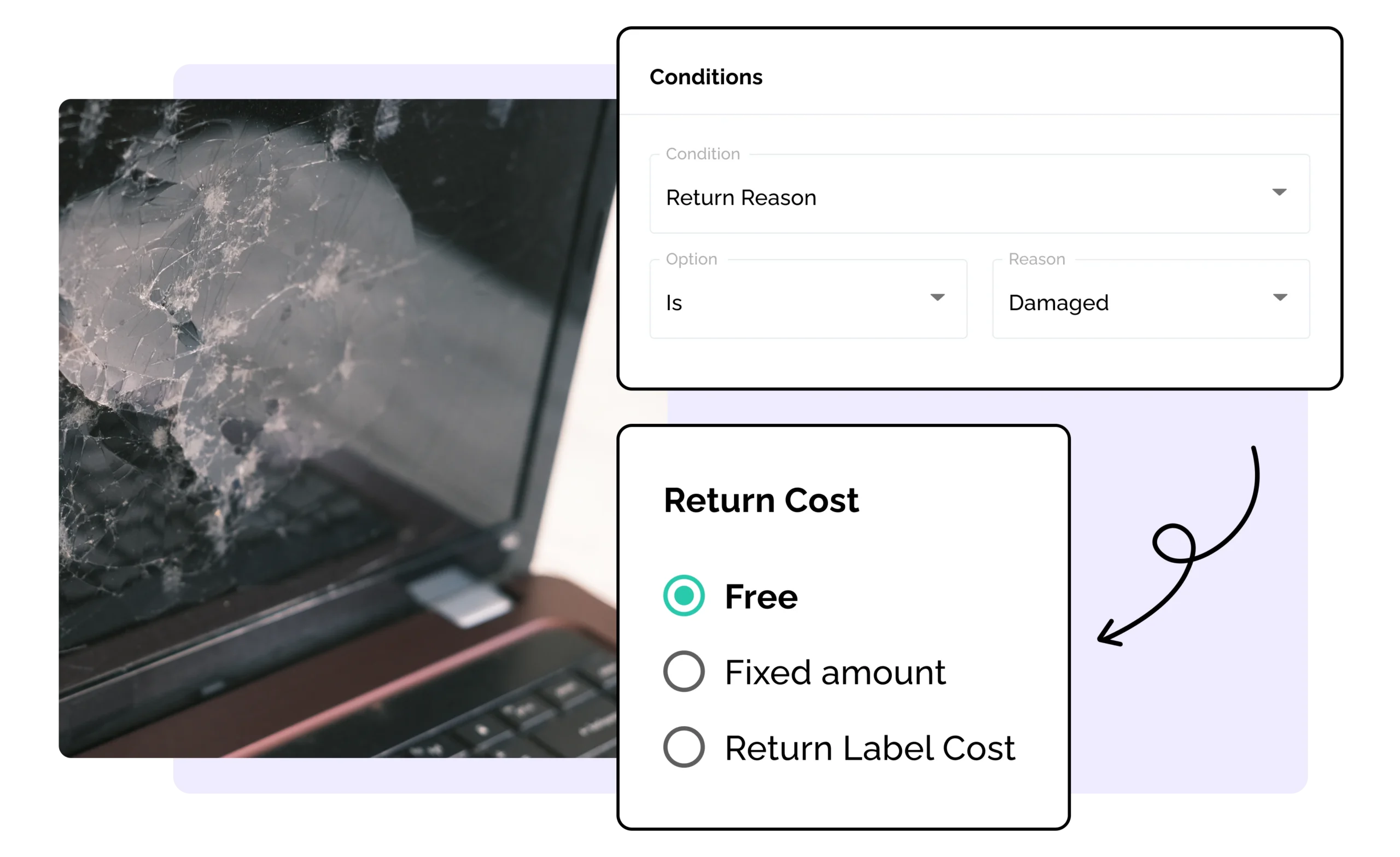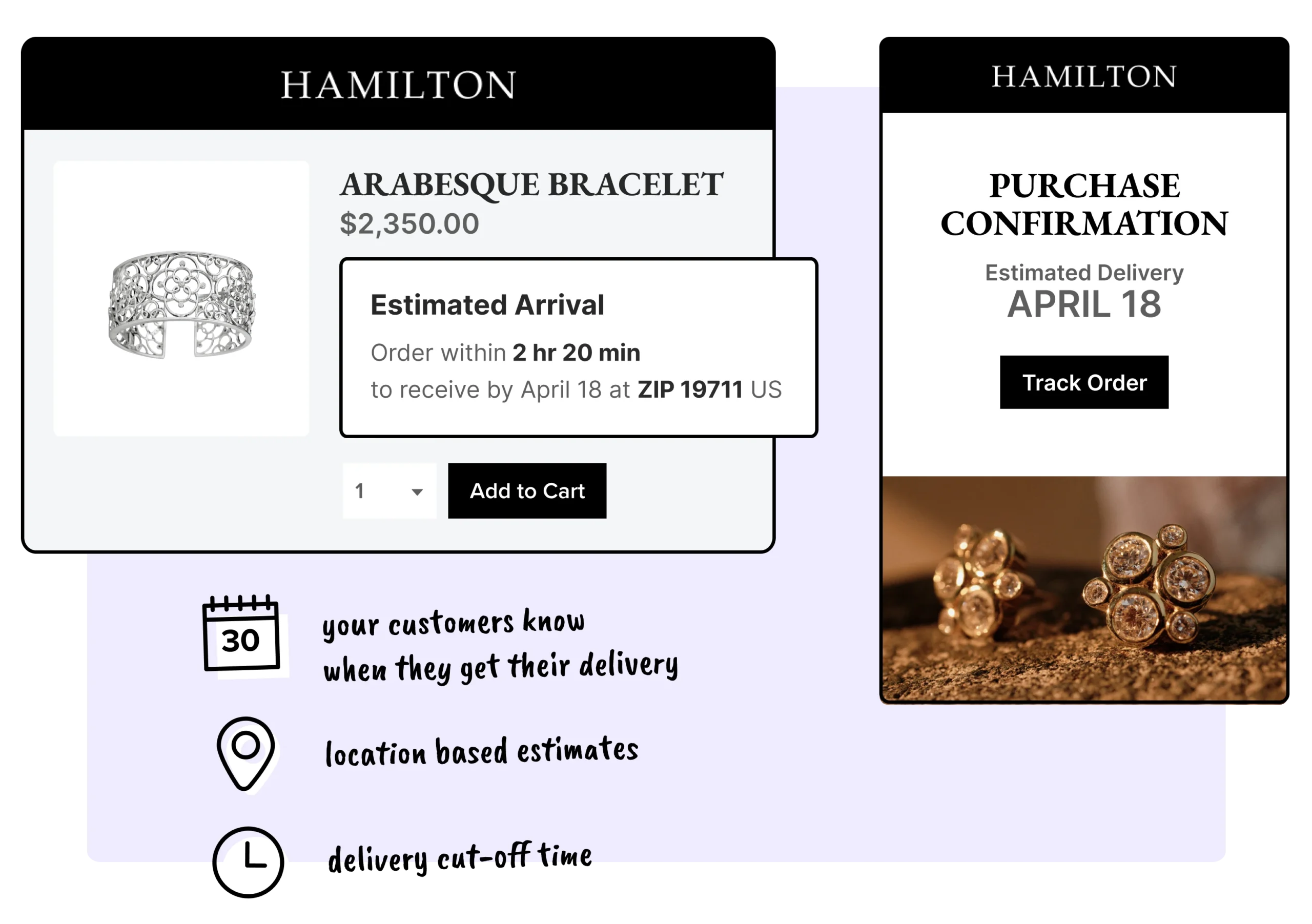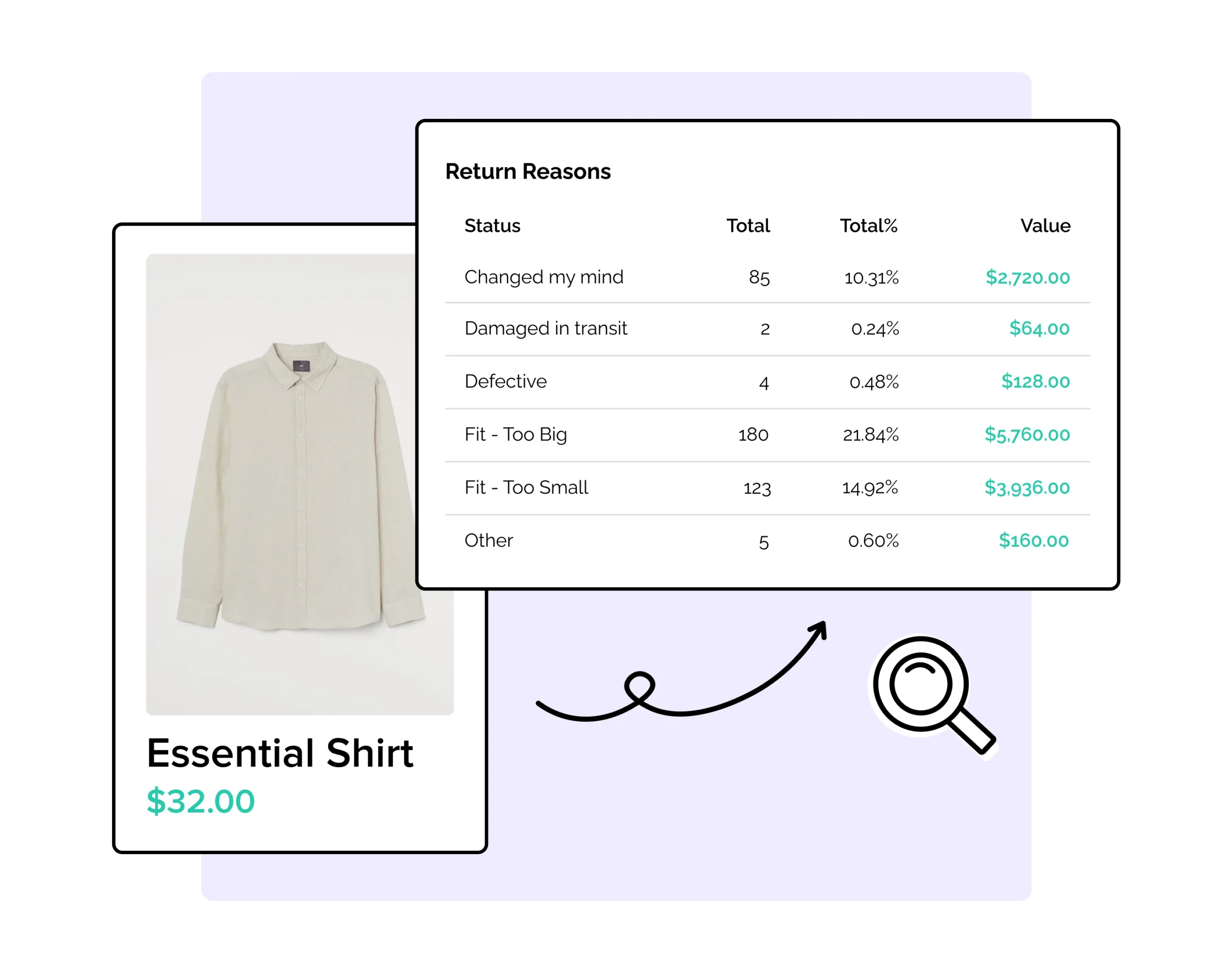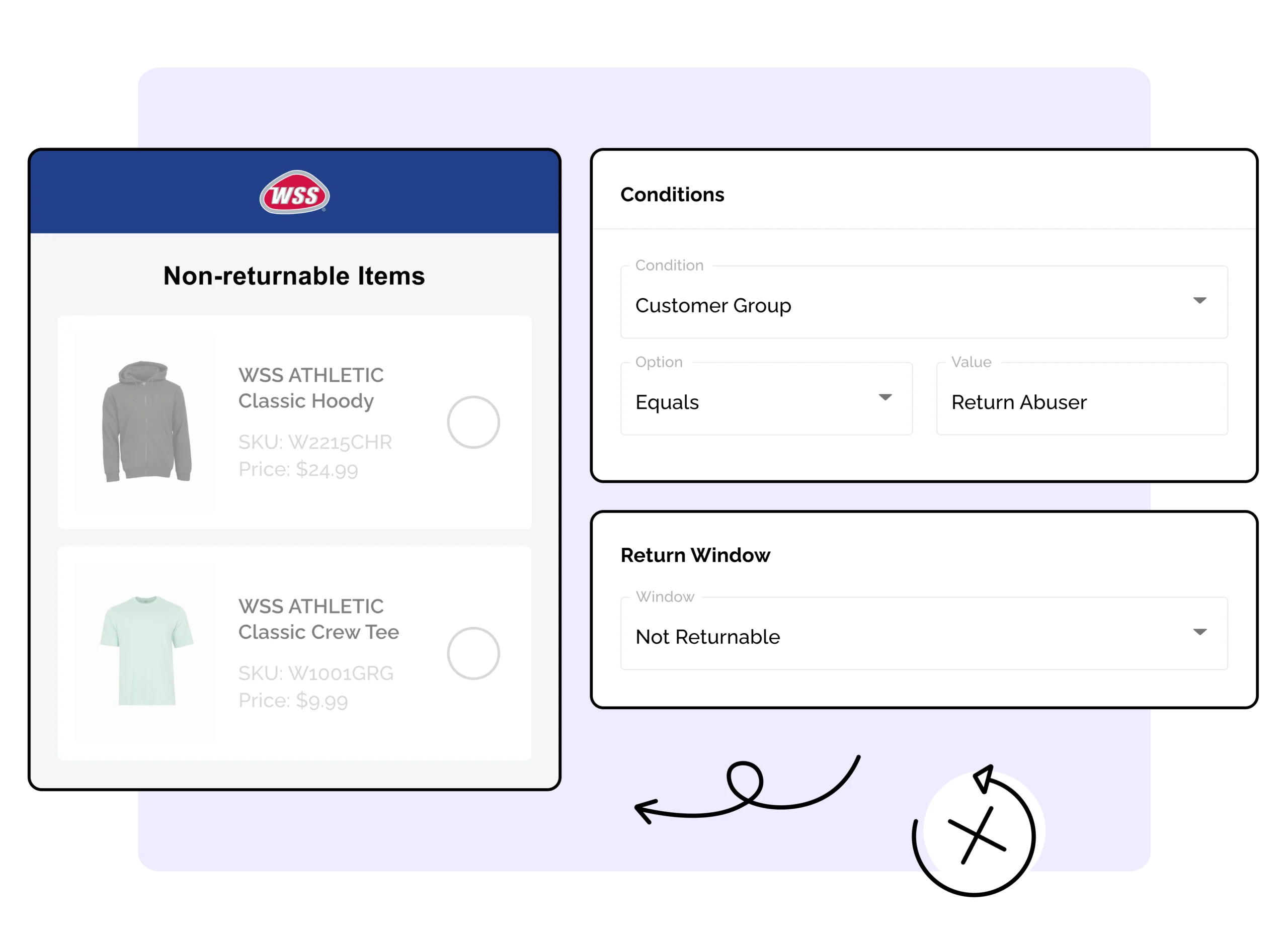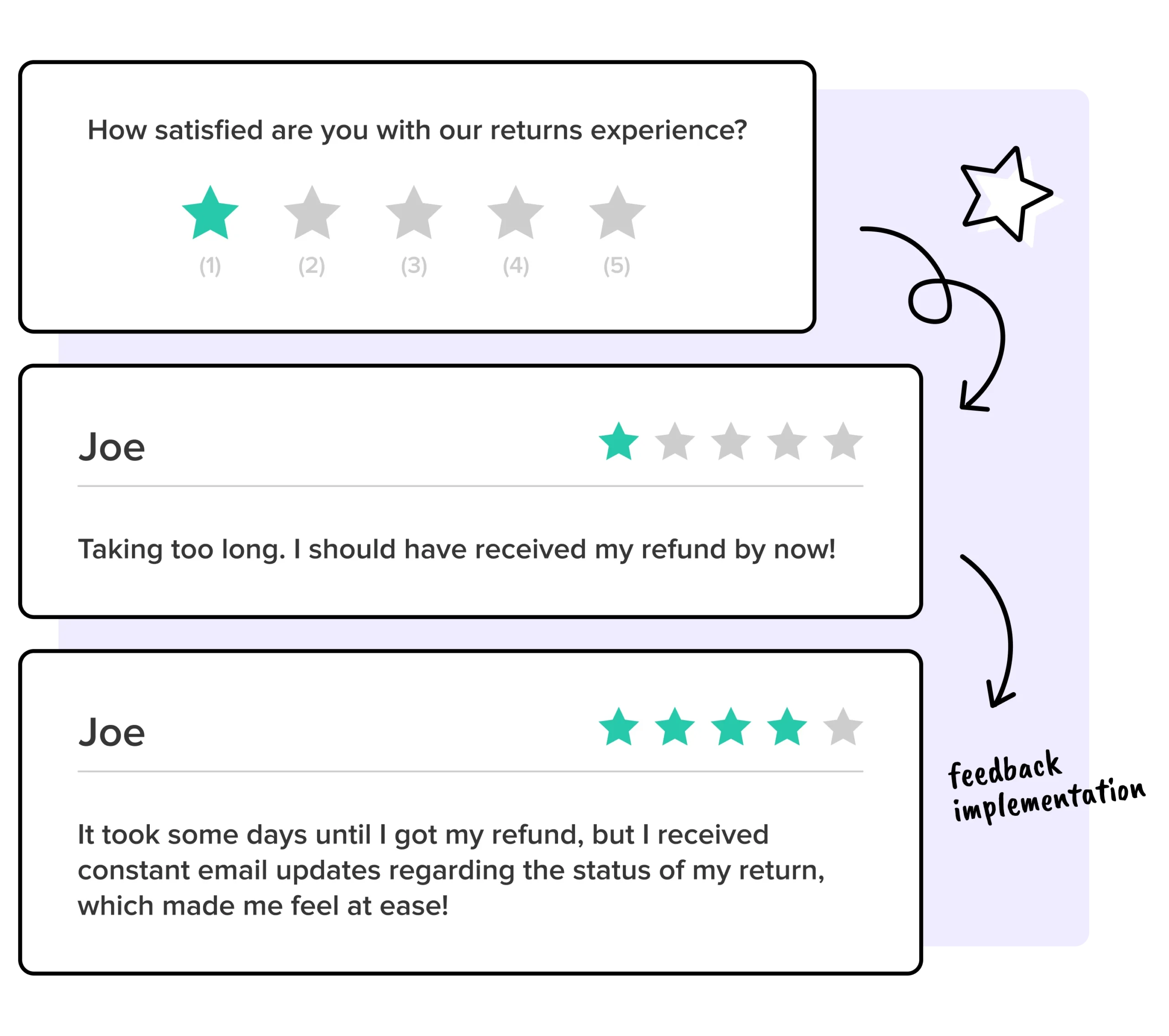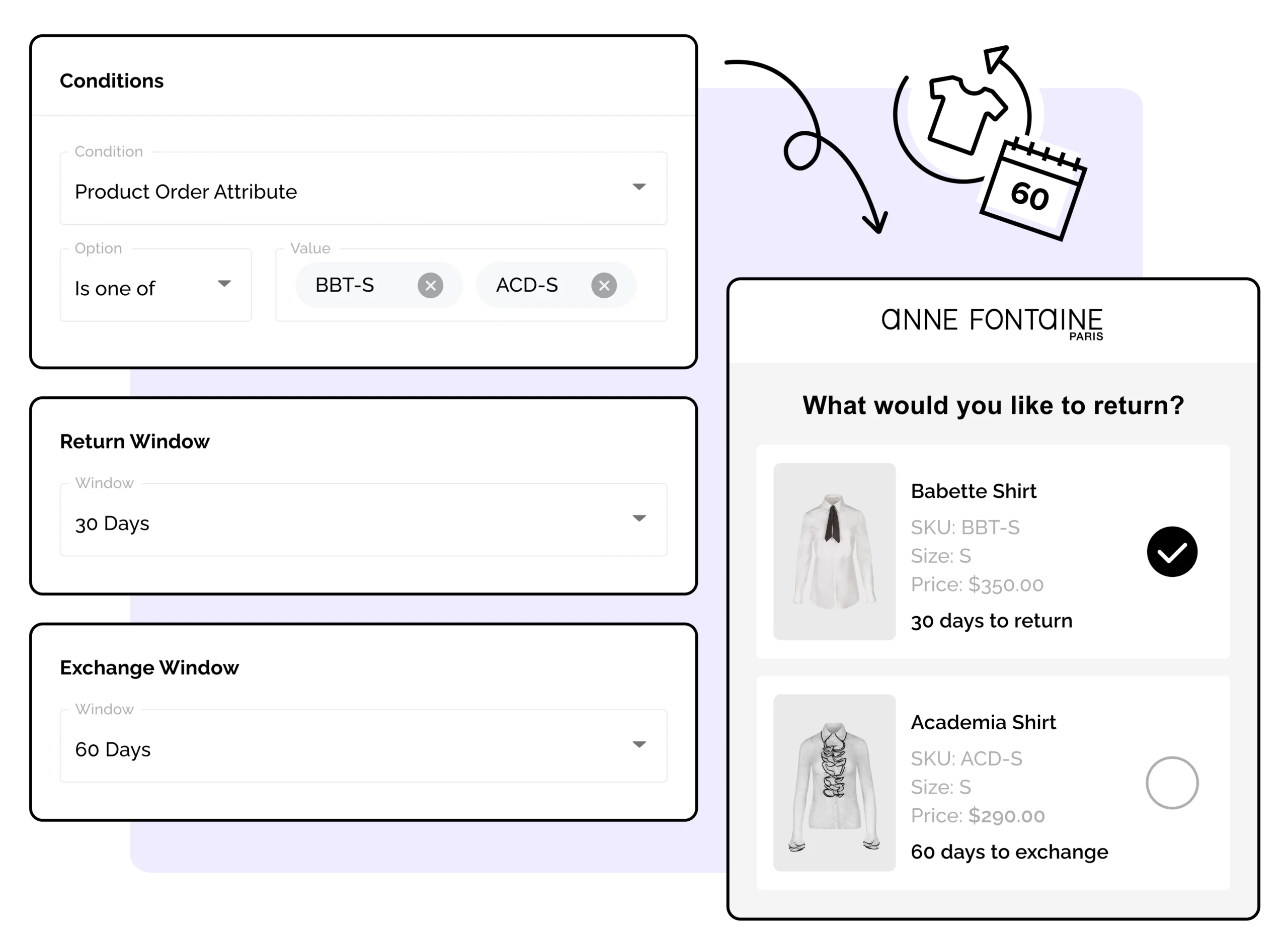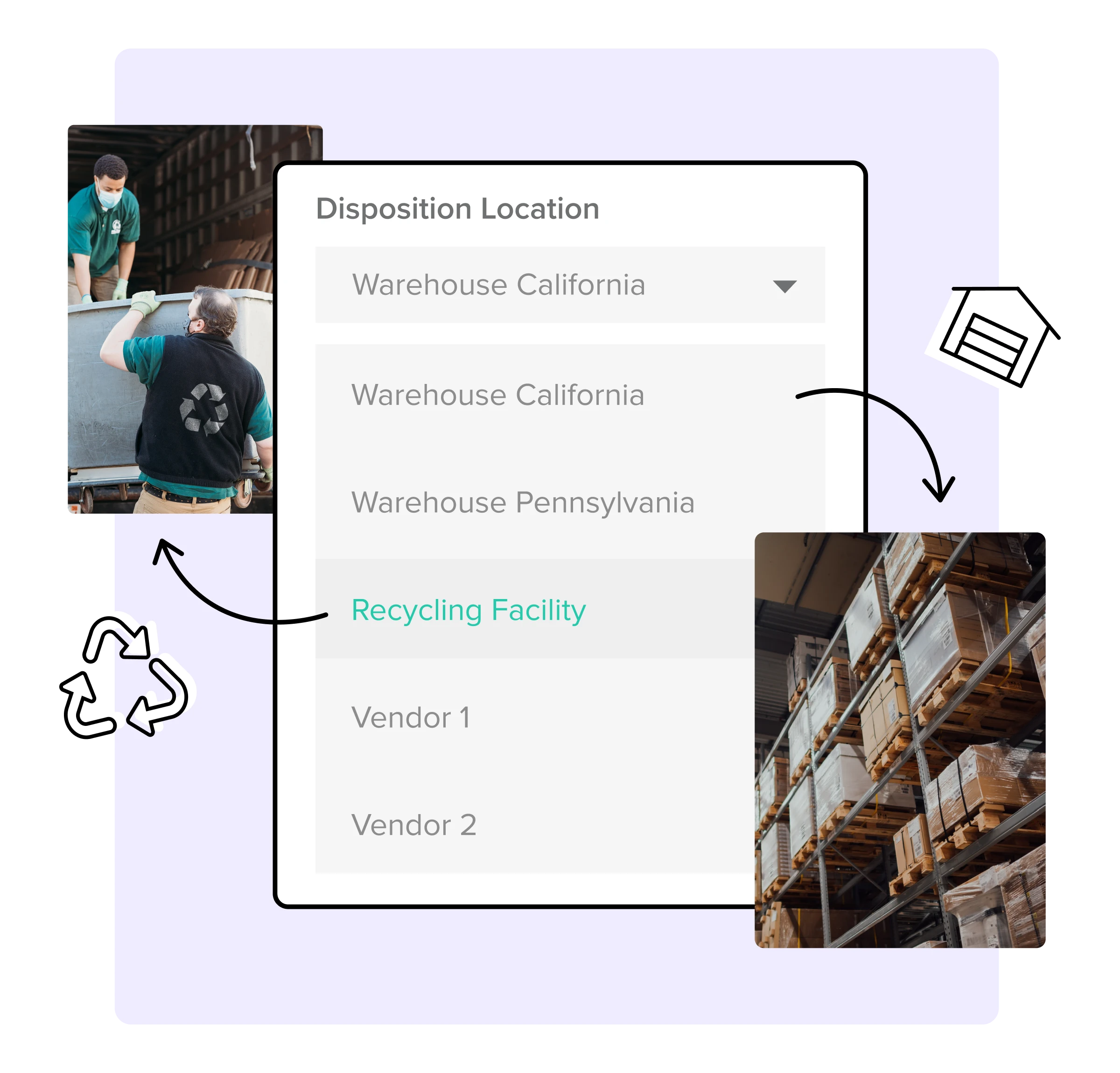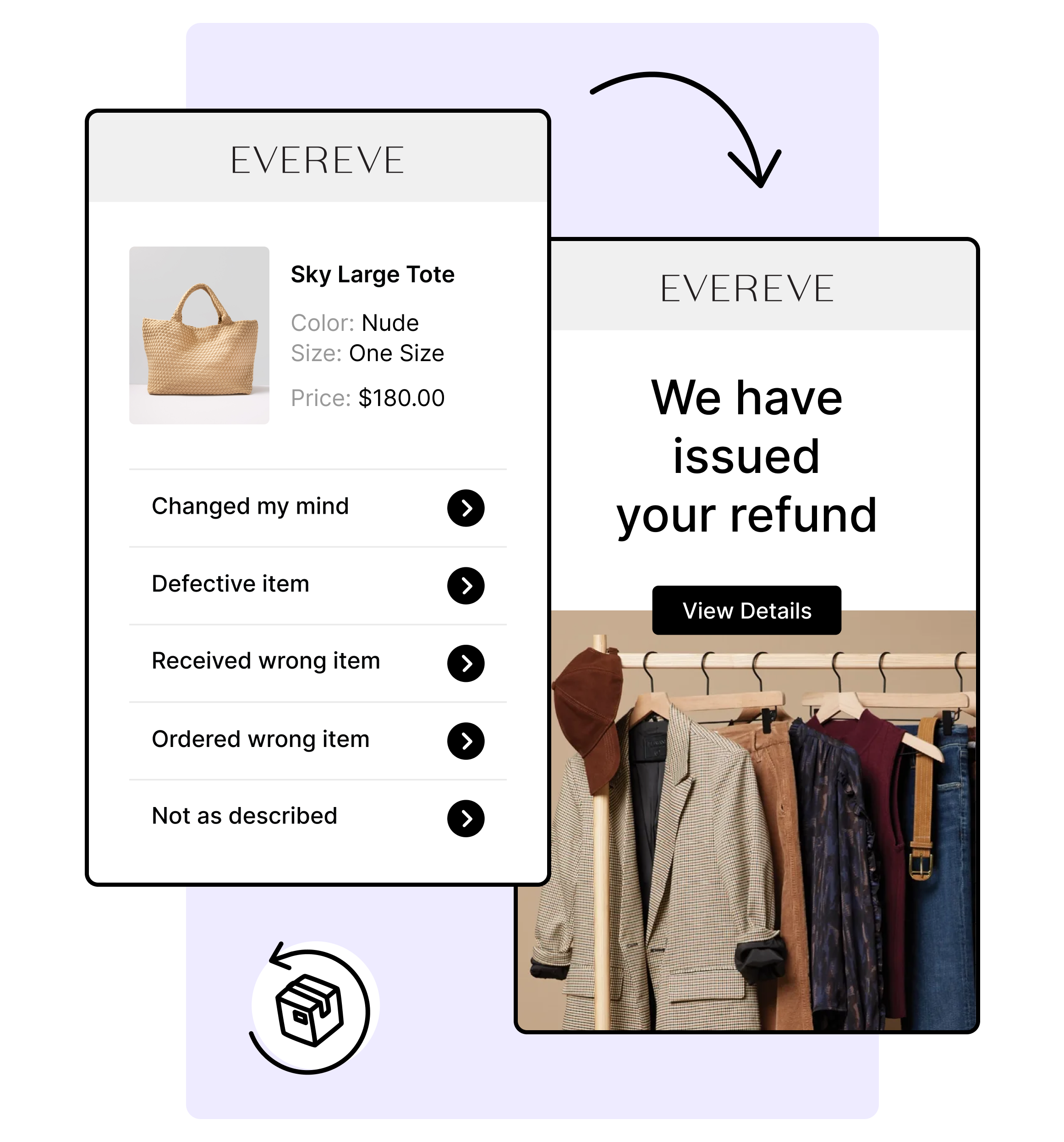8 Common Return Reasons and How to Prevent Them Effectively
Introduction: Understanding Customer Returns and Their Impact
Returns are an inevitable aspect of running an ecommerce business. While customers may expect seamless experiences when making a purchase, merchants face a multitude of challenges once the transaction is complete. Returns can be triggered by various factors, including dissatisfaction with the product, issues with delivery, or a simple change of heart. Understanding why customers return products and how to effectively manage these returns is critical to improving customer satisfaction, enhancing business processes, and minimizing losses.
A customer return occurs when a buyer sends back a purchased product to the seller for a refund, exchange, or store credit. While returns are expected, merchants should strive to minimize them without sacrificing customer trust. Returns cost businesses in terms of shipping, inventory management, and sometimes even customer loyalty. However, it’s essential to realize that returns are not chargebacks. Chargebacks, often a result of fraudulent claims, are far more expensive and damaging to a business’s reputation. By addressing the root causes of returns, merchants can not only reduce the volume of returns but also avoid the costly repercussions of chargebacks.
This article explores the 8 most common reasons customers return their purchases and offers actionable strategies for reducing returns and improving overall customer satisfaction.
What is a Customer Return?
A customer return occurs when a buyer sends back a purchased product to the seller for a refund, exchange, or store credit. This can happen for various reasons, such as dissatisfaction with the product, receiving the wrong item, or discovering defects. Customer returns are an inevitable part of doing business, and handling them efficiently is crucial for maintaining customer satisfaction and loyalty. By offering flexible return options and ensuring a smooth return process, businesses can enhance customer satisfaction and encourage repeat purchases.
Why Do Customers Return Their Purchases?
Customers return their purchases for a variety of reasons, including unmet expectations, damaged or defective products, and incorrect fit. Understanding why customers return items is essential for preventing chargebacks and improving overall business operations. By analyzing return data, businesses can identify common issues and make necessary adjustments to their products, services, and policies. This proactive approach not only helps in reducing returns but also enhances the overall customer experience, leading to higher customer satisfaction and loyalty.
The Impact of Returns on Customer Loyalty
Returns can have a significant impact on customer loyalty. When customers have a positive returns experience, they are more likely to become repeat customers and recommend the business to others. On the other hand, a negative returns experience can lead to customer dissatisfaction and a loss of loyalty. Businesses can mitigate this by having a clear and flexible return policy, providing excellent customer service, and offering store credit for returns. By focusing on these aspects, businesses can foster trust and loyalty among their customers, ultimately driving long-term success.
Common Return Reasons: Breakdown of 8 Key Causes
Understanding the specific reasons behind customer returns can significantly help merchants fine-tune their processes and make informed decisions to prevent returns before they occur. Below, we explore the eight most common reasons why customers return their products, along with actionable strategies to reduce them.
Item Doesn’t Fit
Size and fit issues are among the most frequent reasons for returns, especially in industries like fashion, footwear, and accessories, where customers are shopping online without the ability to try items on. Customers often purchase clothes, shoes, or other items online without the ability to try them on, leading to disappointment when the product doesn’t fit as expected. This can be frustrating for both the customer and the merchant.
Prevention: To mitigate returns due to size or fit issues, eCommerce stores should provide detailed sizing charts and fit guides on product pages. Including multiple points of measurement and clear instructions on how to measure correctly can help customers make better-informed decisions. Offering exchange options or providing free return shipping can also reduce the likelihood of losing a sale over a sizing mistake.
Product Doesn’t Match Description
When customers receive a product that doesn’t align with what was depicted in the product description or imagery, they often feel misled. This is especially true when there is a significant divergence in features, color, size, material, or functionality. A mismatch between customer expectations and the actual product can lead to frustration and a higher return rate.
Prevention: To prevent mismatches between product expectations and reality, merchants must ensure that product descriptions are clear, accurate, and detailed. High-quality images and videos showing multiple angles, textures, and use cases can also help customers get a better understanding of the product before purchase. Transparency is key in this case.
Item Arrived Damaged
Damage during shipping or faulty products are also significant reasons for returns. Customers expect to receive products in perfect condition, and when they don’t, it results in a poor customer experience and often a return request. This issue can arise from inadequate packaging, poor handling during transit, or items being defective when leaving the warehouse.
Prevention: Investing in high-quality packaging materials that protect items during transit is essential. Additionally, implementing strict quality control measures before shipping products out can ensure they meet the merchant’s standards and reduce the likelihood of damage during delivery. By focusing on these preventative measures, merchants can reduce the likelihood of damage during delivery.
Streamlining Returns for Damaged Items
When an item arrives damaged, it’s crucial to address the issue quickly to maintain customer trust and satisfaction. WeSupply’s pre-built return policies help streamline this process with the following features:
-
Automatically reship or replace damaged products, ensuring customers get what they need without delay.
-
Offer customers the option to upgrade to newer versions or different products within the same category for a better experience.
-
Waive return and restocking fees for damaged items, making the return process hassle-free and fair for customers.
By implementing these policies, businesses can enhance customer satisfaction, foster repeat business, and improve profitability by reducing the impact of damaged goods.
Wrong Product or Size Shipped
A common return reason occurs when the wrong product or size is shipped to the customer. This can happen due to errors in order fulfillment or inventory management. Even a small mistake in order picking can result in the wrong item being sent to the customer, leading to confusion and dissatisfaction.
Prevention: Merchants should implement robust order fulfillment processes, including double-checking product details before shipment. Using barcode scanning and automated systems can reduce human error and ensure that the correct products are shipped. Additionally, a clear and detailed order confirmation can help customers verify their order before it is shipped.
Late Delivery
Many customers expect fast shipping, especially if they need the product for a specific event or occasion. When delivery is delayed, customers may return items simply because they no longer need them. Late deliveries can also create a negative experience for customers, impacting their overall satisfaction with the business.
Prevention: Merchants should optimize their order fulfillment processes by working with reliable shipping carriers and setting realistic delivery timelines. Providing customers with accurate tracking information and timely updates on their shipments will help manage customer expectations and reduce the chance of returns due to delays.
Managing Late Deliveries with Clear Communication
Late deliveries can cause frustration and damage customer trust, but WeSupply offers solutions to address and manage these issues effectively. Here’s how:
- Estimated delivery dates help set clear expectations for when orders will arrive, eliminating shipping anxiety and ensuring customers feel confident in their purchase.
-
Order tracking provides real-time updates, allowing customers to easily track their shipments and stay informed about their order’s status.
-
Delivery notifications keep customers updated with proactive alerts about their order’s progress, including any delays or changes, so they don’t have to reach out to you.
By offering these tools, WeSupply helps businesses improve communication, reduce anxiety, and build long-term customer loyalty, even when delivery issues arise.
Combat inconvenience with proactivity & self service
Book a quick call with our experts to see how WeSupply can help you make returns easy for your customers with a beautiful, self-service solution that makes their experience easier while also providing new ways to lower costs and earn back revenue.
Customer Changed Their Mind
Sometimes, customers simply change their minds after making a purchase. This is especially common in cases where the product was bought impulsively or without careful consideration. When the item arrives, the customer realizes it is not needed, leading them to return it.
Prevention: A flexible return policy that includes exchanges or store credit can help prevent lost sales from mind-changing customers. Allowing customers to easily exchange items or receive store credit instead of a refund can retain revenue and encourages customers to make future purchases.
Buyer’s Remorse
Buyer’s remorse is another common reason for returns, particularly when customers feel guilty about making an impulsive purchase. After the excitement of purchasing wears off, customers may reconsider their decision, leading to a return request.
Prevention: Merchants can prevent buyer’s remorse by offering easy returns, exchanges, or store credits as part of a hassle-free returns policy. This reduces the negative impact of remorse and ensures that customers can still find value in their purchase.
Turning Buyer’s Remorse into Sales Opportunities
When customers change their mind or experience buyer’s remorse, it’s important to offer flexible solutions that keep sales intact and maintain customer trust. WeSupply helps you turn returns into opportunities with the following features:
- Convert returns into exchanges by allowing customers to exchange items for the same product, a different product, or a higher-value item.
-
Incentivize exchanges over returns by offering instant store credit, which can be used on future purchases, boosting average order value.
-
Automatically send customers back to your product catalog after initiating a return, making it easy for them to find something else they’ll love.
-
Offer refunds as store credits, gift cards, or coupon codes, which keeps customers engaged and encourages repeat purchases.
By making exchanges easy and rewarding, WeSupply helps businesses reduce buyer’s remorse, save sales, and foster customer loyalty while increasing the overall value of each transaction.
Quality Expectations Not Met: Importance of Quality Control Measures
Customers expect high-quality products that match their needs and preferences. When the product underperforms or does not meet the expected quality standards, it can result in a return.
Prevention: To reduce returns due to quality issues, merchants must ensure that their products meet strict quality control standards before shipping. Providing customers with realistic expectations about the product’s features, durability, and performance can also help minimize returns caused by unmet quality expectations and increase customer satisfaction.
Managing Customer Expectations to Reduce Returns
Setting and managing customer expectations effectively can significantly reduce return rates. By clearly communicating product details, offering a transparent return policy, and ensuring customer satisfaction, merchants can improve the overall shopping experience and reduce dissatisfaction for both current and future customers.
Setting Realistic Expectations
Providing detailed and honest product descriptions is essential to help customers make informed decisions. Inaccurate or vague product information can lead to confusion and returns. Merchants should ensure their product descriptions are clear, comprehensive, and aligned with what customers will actually receive.
Prevention: Accurate product descriptions, clear sizing information, and material details are essential. High-quality product images from various angles, along with videos showcasing the product in use, can further enhance the customer’s understanding.
Using High-Quality Images and Videos
Visuals are a crucial element in eCommerce because they help customers visualize the product and understand its features. Providing high-quality images and videos that show the product from multiple angles, in different lighting conditions, and in use can help customers feel more confident in their purchasing decisions.
Prevention: Use professional-grade photos and videos that showcase the product’s size, texture, and functionality. The more information customers have before purchasing, the less likely they are to return an item due to unmet expectations.
Offer Detailed Sizing Guides and Fit Information
Accurate sizing information can drastically reduce returns due to fit issues. Customers should have access to interactive size guides or detailed sizing charts that help them choose the correct size for their needs. Merchants can also provide guidance on how to measure for clothing, shoes, and accessories to ensure a better fit.
Prevention: Interactive size guides and measurement instructions on product pages help customers choose the right size and avoid costly returns.
Educate Customers on Product Use
Educating customers on product use can help reduce returns driven by buyer’s remorse or dissatisfaction with product performance. By providing detailed instructions, guides, or videos, businesses can empower customers to use their products effectively and reduce the likelihood of returns. This proactive approach not only helps in building trust but also increases customer satisfaction. When customers feel confident in using a product, they are less likely to return it, leading to a more positive shopping experience and higher overall customer satisfaction.
WeSupply: Optimizing Product Accuracy to Reduce Returns
Managing customer expectations is key to reducing returns and ensuring customer satisfaction. WeSupply helps businesses better understand return reasons and improve product offerings with powerful tools. Here’s how:
- SKU-level returns analytics let you identify specific return reasons by product and variant, including issues with size, color, and quality.
-
Adjust sizing charts based on real customer feedback to prevent sizing-related returns.
-
Review product images to ensure they accurately reflect the product, reducing customer surprises.
-
Identify products that need more customer reviews to build trust and set accurate expectations.
-
Gather feedback on product fit, allowing you to make targeted improvements to your offerings.
By using these features, businesses can set clearer expectations, improve product accuracy, and ultimately reduce return rates.
Proactive Return Management: Leveraging Data and Analytics
In today’s competitive eCommerce landscape, businesses that proactively manage returns are better positioned to enhance customer satisfaction while minimizing losses. Leveraging data and analytics is a powerful way to drive improvements in the return process. By collecting data on returns, merchants can identify patterns, understand customer pain points, and make data-driven decisions to prevent future returns. This involves analyzing various factors, such as why products are being returned, when they are being returned, and which customer segments are most likely to return items. With this valuable information, businesses can refine their product offerings, adjust their marketing strategies, and optimize their operations. Proactive return management doesn’t just reduce costs— it helps improve overall customer experience by ensuring that the return process is smooth and efficient, with a well-trained customer service team ready to assist.
Tracking Return Trends
In the world of eCommerce, common return reasons can significantly impact your bottom line. WeSupply helps you track and prevent these returns by providing:
- Insights into the most returned products, so you can pinpoint items with recurring issues.
- Understanding of why products are returned, whether it’s due to size, quality, or expectations not being met.
-
Identification of serial returners, helping you address patterns in customer behavior.
-
Actionable insights to optimize product descriptions, sizing guides, and quality control, reducing return rates.
With this data, you can proactively address common return reasons, improving both customer satisfaction and operational efficiency.
Continuous Improvement
Continuous improvement is essential to keeping your eCommerce business on top of customer expectations. WeSupply makes it easy to enhance your product offerings by providing valuable insights like:
-
SKU-level returns analytics to pinpoint return reasons for specific products, including size, color, and quality.
-
The ability to adjust sizing charts based on real customer feedback.
-
A chance to review product images and ensure they match customer expectations.
-
Identifying products that need more customer reviews to build trust.
-
Collecting customer feedback on product fit to keep refining your offerings.
We also help you measure key metrics like Customer Satisfaction (CSAT) and Net Promoter Score (NPS), giving you the data to make smarter, customer-focused decisions. With these tools, you can continuously improve and create a better shopping experience for your customers.
Create a Comprehensive Return Policy
Creating a comprehensive and clear return policy is essential for managing customer expectations, reducing returns, and boosting customer satisfaction. A well-defined policy should cover key details such as return windows, restocking fees, and exchange options. WeSupply helps you build a return policy that’s not only transparent but also flexible and customer-friendly by offering:
- Confusion-free return windows, ensuring customers always know when their return period begins.
-
The ability to convert returns to exchanges, incentivizing customers to opt for store credit over refunds and preserving your revenue.
-
Smart return rules that match item attributes and use cases, offering tailored solutions for every return scenario.
-
Conditions like free return shipping and flexible return logistics to create a hassle-free experience.
-
Intelligent dispositions for efficiently sorting physical returns.
By providing this level of clarity and flexibility, your business can assure customers that you’re committed to their satisfaction, helping to reduce confusion and enhance their overall experience. With a solid return policy in place, customers will feel confident and are more likely to shop with you again.
Offer Store Credit for Returns
Offering store credit for returns is a win-win for both businesses and customers. It encourages future purchases, increases customer loyalty, and reduces the financial impact of returns. WeSupply makes this process seamless by providing several key features to support your business:
-
Reward customers who opt for instant store credit over refunds, encouraging them to come back and shop again.
-
Send customers back to your product catalog after initiating a return, making it easy for them to find something else they’ll love.
-
Automatically refund via store credit, gift cards, or coupon codes, streamlining the process for both you and your customers.
-
Issue coupon codes, gift cards, or store credits automatically, so customers can immediately use their credits.
This approach not only provides flexibility for customers to choose products that better meet their needs, but also fosters a positive shopping experience, leading to higher customer satisfaction and loyalty. By offering store credit, businesses can retain revenue and create lasting relationships with their customers.
Case Study: Evereve's Success Turning Returns Into Opportunities
EVEREVE, with over 93 boutiques and a rapidly expanding online presence, is known for delivering a unique shopping experience. However, the onset of COVID-19 brought new challenges, particularly in handling the surge of e-commerce returns. The pandemic drove e-commerce sales up by 11% in 2020, but this increase also led to higher return rates, which climbed to as much as 50% in some apparel sectors.
The company faced several challenges with its manual and inefficient returns process. There was a lack of visibility into return data, which made it difficult to address underlying issues. Delays in processing returns led to significant markdowns, and customer service teams were overwhelmed with return-related inquiries. Moreover, there was no centralized system to manage returns, which further complicated the process.
To address these issues, EVEREVE aimed to simplify and automate their return process while enhancing customer loyalty through self-service returns. By partnering with WeSupply, they integrated technologies like Magento, Zendesk, and others, automating the returns process and centralizing management. This new approach focused on proactivity, self-service, and return flexibility.
The results were significant. EVEREVE saw cost savings by reducing the number of support tickets, easing the burden on customer service teams. The returns process became faster and more accurate, with clear accountability and improved efficiency. Customers benefitted from a streamlined experience with proactive notifications and self-service options, allowing them to handle returns independently, which increased satisfaction and loyalty.
Ultimately, EVEREVE improved operational efficiency, reduced shipping costs, and optimized return routes through predictive analytics. This transformation turned returns from a challenge into a strategic advantage, enhancing both efficiency and customer satisfaction.
Simplify Returns for Your Customers and Support Team
Book a quick call with our experts to see how WeSupply can help you: simplify the Return experience with just a few clicks, reduce customer service calls and manual processing, notify your customer about their refund, automate returns and reduce user error
Conclusion: Building a Stronger Returns Process for Long-Term Customer Loyalty
Understanding the common reasons behind returns is the first step in preventing them. By offering clear product descriptions, improving order fulfillment processes, and managing customer expectations, merchants can reduce the likelihood of returns and enhance customer satisfaction. Additionally, implementing a flexible return policy, such as offering exchanges or store credit, can help retain revenue and foster customer loyalty.
While it’s impossible to eliminate returns entirely, focusing on these strategies can significantly reduce return rates and improve overall business efficiency. A strong returns process not only saves costs but also fosters trust and loyalty among customers, leading to long-term success.
Summary
WeSupply helps businesses address common return reasons by providing tools to manage customer expectations and streamline the return process. With features like SKU-level returns analytics, clear estimated delivery dates, and proactive delivery notifications, WeSupply helps reduce confusion and set realistic expectations. It also incentivizes exchanges over returns by offering instant store credit and making it easy for customers to shop for alternatives. By allowing flexible return policies, including waiving fees for damaged items, and offering refunds as store credit or gift cards, WeSupply helps businesses retain revenue while enhancing customer satisfaction.



